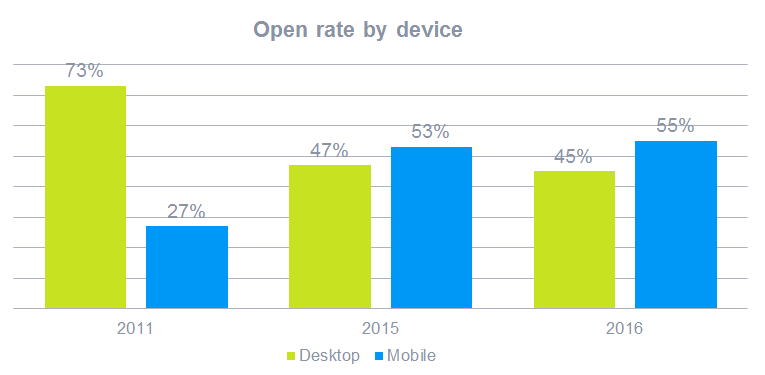Anyone who has worked in the SEO field for a while would surely know that there is no fixed rule in the game. To consistently outperform your rival, it is necessary to master the trends as they come or be swept away into oblivion.
For 2017, here are the top 5 trends in SEO that will give your brand more visibility online:
Smarter AIs Could Change Algorithms
One of the major factors that could affect SEO in 2017 is, of course, the latest advancements in artificial intelligence technology. Everyone should expect the way search engines work to change as smarter AIs join the game.
Google users should expect changes on how the popular search engine does the work for them. In late 2016, Google RankBrain was unleashed, paving the way for the search engine to learn how people use the facility.
The latest Hummingbird extension boasts of an algorithmic machine learning technology with the end goal of improving the search experience for users. According to Forbes, RankBrain enabled Google to learn how people use phrases in their queries and, with the information, update the search engine’s algorithm accordingly. Of course, this means that content providers must relearn things if necessary and adapt to the changing search landscape. The previous update left many webmasters grumbling when they found out that their articles hardly make it to the coveted “Top Stories” section anymore.
The rising popularity of digital assistants, such as Siri and Cortana, is also changing the way people make searches online. This means that with the increasing use of these intelligent digital assistants, advanced forms of conversational queries will increase, opening up another segment that companies could target.
AMP Gets Amped
While desktop computing won’t exactly disappear, search engine use is projected to see the most growth in the mobile segment. The Accelerated Mobile Pages (AMP) project protocol anticipates this trend and is in place to make content optimized for mobile browsing.
Pages running on AMP get loaded on mobiles devices four times faster than regular ones. In fact, Google favors AMP content. Since last February, Google has been marking AMP sites with a lightning bolt icon and featuring them more prominently in search results.
Going AMP would also benefit users in the long run. Pages load faster because it uses 8 times less data compared to a regular page. And of course, everyone knows that loading speed is a big factor in viewer retention.
Branding Goes Personal
Some industry watchers predict that personal branding is the way to go to be successful with your online campaign. Of course, that is not saying that you should do away with the corporate brand, but there are advantages when people within an organization tell their own stories. Think of personal branding as a way to complement a company’s SEO efforts and how it reaches out to its online customers.
Nowadays, corporations have to deal with being perceived by consumers as manipulative and greedy. Therefore, engaging consumers on a personal level is seen as the solution to diffuse this consumer wariness. By providing a personal identity that corporations naturally lack, personal branding makes it easier for consumers to trust the brand.
In addition, posting on a personal level amplifies the reach of a company. For instance, if a CEO of a company has three personal accounts on social media for this purpose, he is multiplying his corporate exposure as all of these accounts can grow their own follower base independently. In addition, these separate accounts can be used to target different segments of the market, which could result in a more customized posting that could potentially increase engagement.
UEO Meets SEO
Another important trend to watch out for is the rising importance of UEO in SEO. In fact, there are indications that user experience optimization (UEO) is going to become more important in SEO rankings.
Google is now giving hints that it may give more weight to user experience in its search result. One such hint is that the search engine giant seems to favor pages that load quickly with its preference for AMP content.
If the trend continues, the next step would be for Google to favor pages that offer a more enjoyable user experience. One metric that could come into play is the length of time a visitor stays on a page– staying a long time usually means that the visitor enjoys the content. While user experience has been an important metric in ranking pages for some time now, it looks like it’s going to become even more important in future versions of the search algorithm. The bottom line is that webmasters should post quality content in well-designed sites that most people will enjoy.
Content Gets Denser
Speaking of content, there is another trend that experts are predicting– the rise of denser content. According to Smart Insights, there was a time when tons of brief but “fluffy” content-wise posts sufficed, which was eventually replaced by lengthy, seemingly complicated content to rank in SEO. However, those two extremes are now being replaced by what is referred to as Dense Content.
Simply put, Dense Content is when one offers tons of information using the smallest space possible. Of course, this presents an entirely new challenge which would definitely involve some spark of creativity and the flair for creating stunning visuals. But of course, the challenge is what makes SEO very interesting.
[Featured Image by Pixabay]










 Researchers believe that more security
Researchers believe that more security A more sophisticated augmented reality technology is expected to be seen in 2018, and with it are more instances for its use.
A more sophisticated augmented reality technology is expected to be seen in 2018, and with it are more instances for its use. Data enhancement tools, email syncing, and VOIP connections used to be features that companies would
Data enhancement tools, email syncing, and VOIP connections used to be features that companies would






 business transactions and communications became ubiquitous. The IoT is expected to remain strong next year, but the continued development of cloud computing and real-time data analytics will also see the Internet of Everything (IoE) pushed to the forefront.
business transactions and communications became ubiquitous. The IoT is expected to remain strong next year, but the continued development of cloud computing and real-time data analytics will also see the Internet of Everything (IoE) pushed to the forefront.









